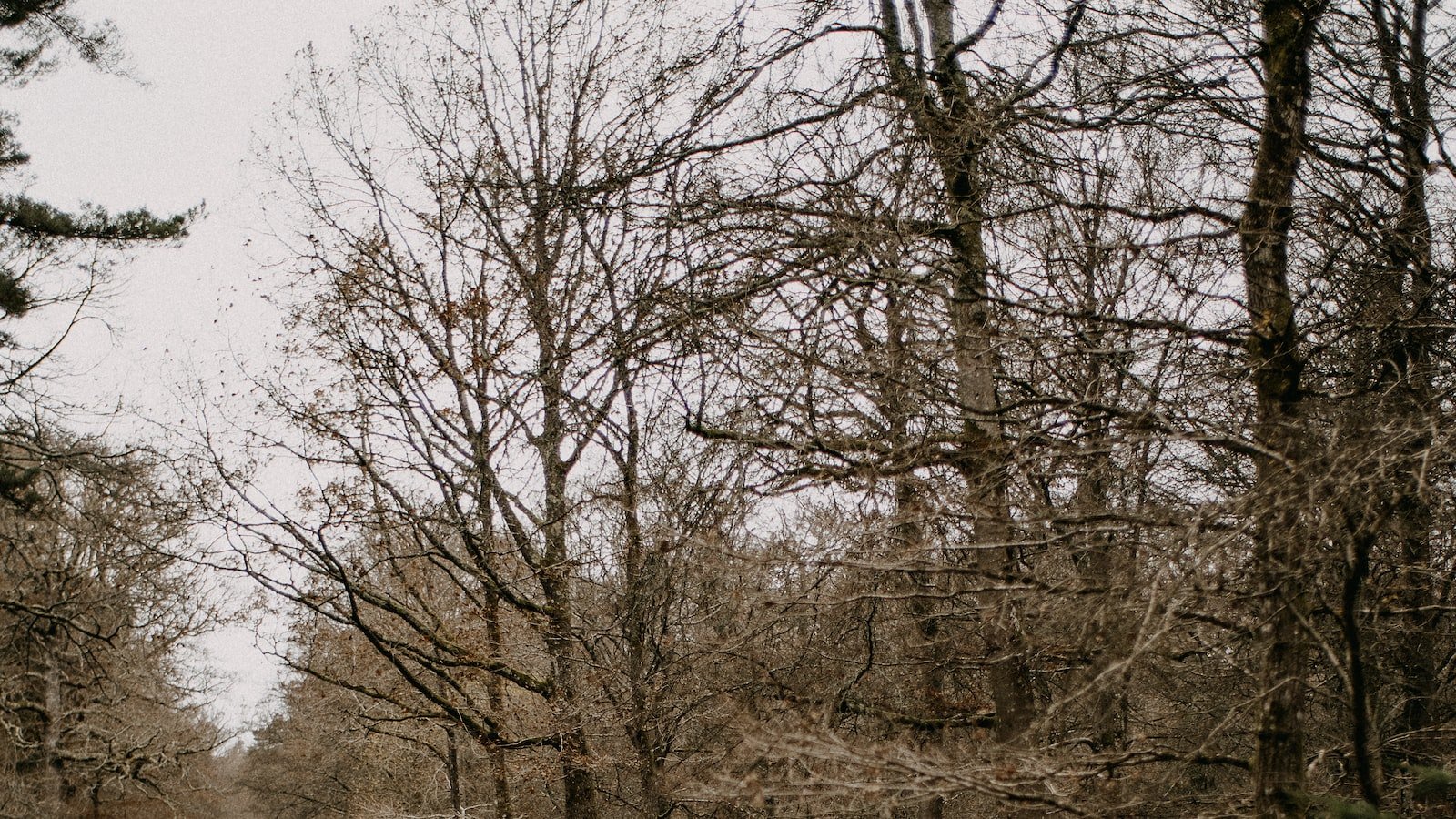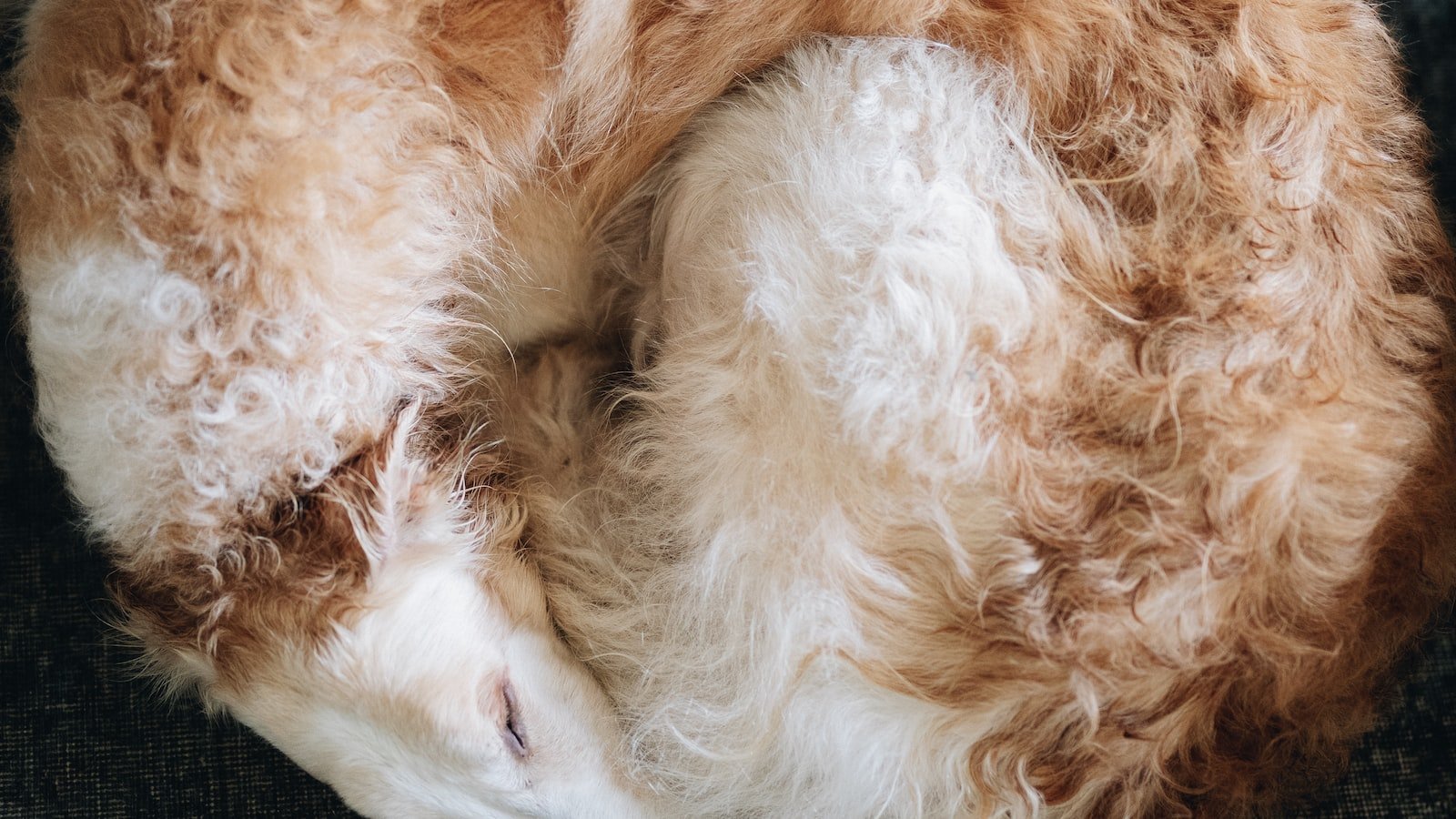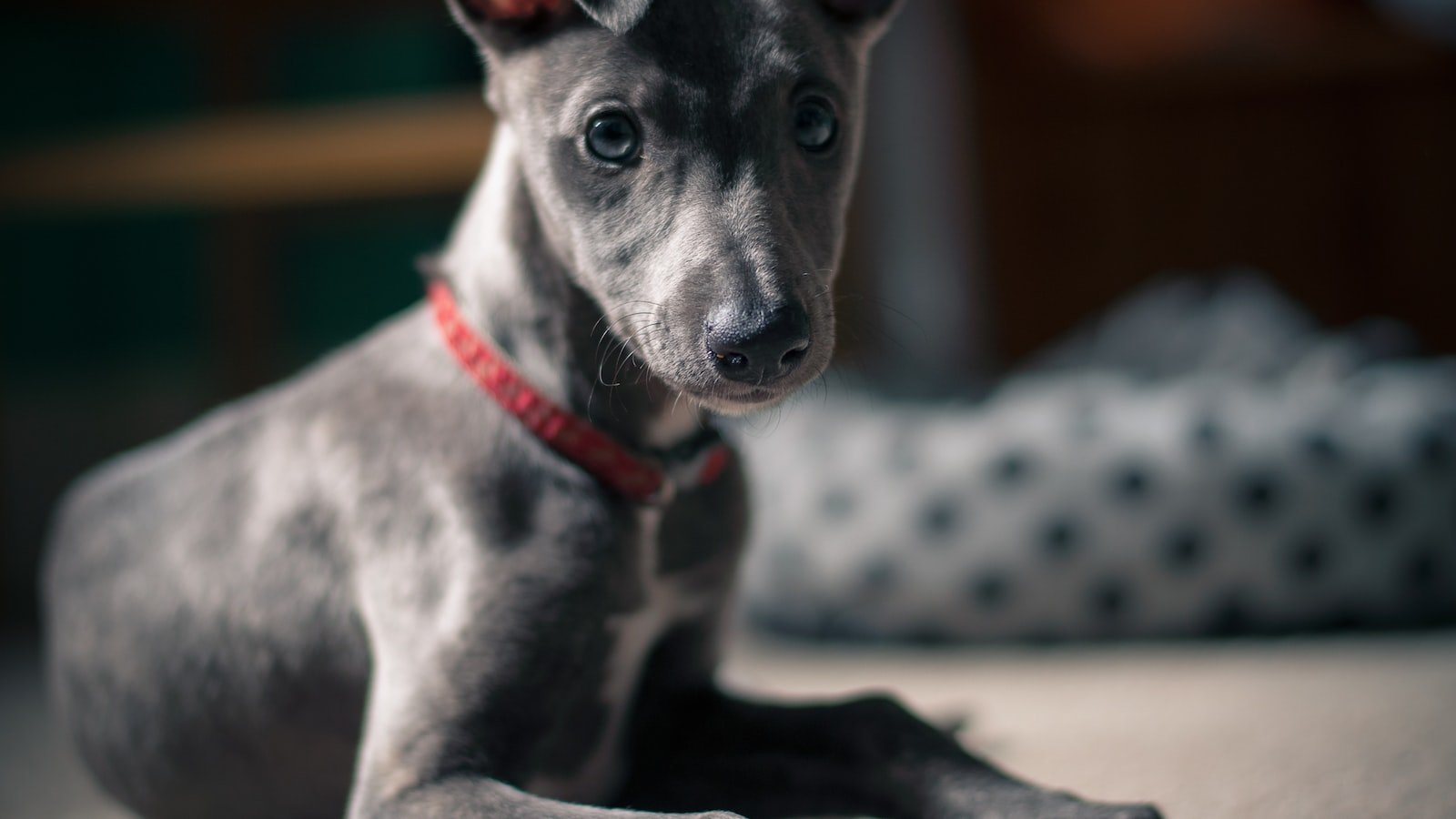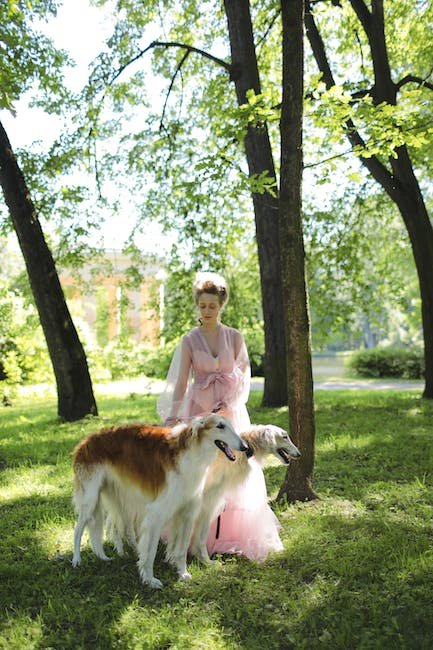With a noble lineage stretching back thousands of years, sighthounds have long captivated us with their elegance and speed. From the graceful Greyhound to the regal Borzoi, these magnificent creatures possess a natural instinct to run like the wind, an instinct that has made them exceptional courseracers throughout history. However, to truly unlock their innate potential and witness them soar to the pinnacle of excellence, rigorous and methodical dog training becomes an essential ally. In this comprehensive guide, we delve into the world of dog training for courseracing, unpacking the strategies and techniques specifically catered to these majestic sighthounds. So, whether you are a seasoned competitor seeking to fine-tune your hound’s skills or an aspiring handler venturing into the realm of courseracing for the first time, join us as we embark on an enlightening journey into the art of training sighthounds for the ultimate pursuit of coursing glory.
Table of Contents
- Introduction: Understanding the Unique Training Needs of Sighthounds in Courseracing
- Building a Strong Foundation: Instilling Basic Obedience Skills for Sighthounds
- Fine-tuning Physical Fitness and Endurance: Conditioning Techniques for Racing Sighthounds
- Mastering the Chase: Training Sighthounds to Perfect Their Racing Skills
- Optimizing Performance: Advanced Techniques for Speed and Agility Training
- Q&A
- In Retrospect

Introduction: Understanding the Unique Training Needs of Sighthounds in Courseracing
Sighthounds are a special breed of dogs known for their incredible speed and agility, making them the perfect candidates for courseracing. However, understanding their unique training needs is crucial in unlocking their full potential on the racetrack.
One important factor to consider when training sighthounds for courseracing is their natural instinct to chase. Sighthounds have an innate desire to pursue moving objects, which is why it is essential to channel this energy in a controlled and focused manner. Incorporating exercises that simulate the chase, such as lure coursing, can help fine-tune their hunting skills and improve their overall performance on the track.
Additionally, it is vital to prioritize their physique and conditioning. Sighthounds have lean, muscular bodies that require specific training techniques to develop and maintain their speed and endurance. Including regular sprint training and agility exercises in their regimen can help enhance their muscle tone, improve their reaction time, and boost their cardiovascular capacity.
To achieve the best possible outcomes in courseracing, understanding and addressing the unique training needs of sighthounds is essential. By harnessing their innate instincts, focusing on their physical conditioning, and providing consistent and tailored training, these elegant and swift dogs can reach their full potential and dominate the racetrack.

Building a Strong Foundation: Instilling Basic Obedience Skills for Sighthounds
For sighthound owners, establishing a strong foundation of basic obedience skills is crucial to ensure a harmonious and safe relationship with your beloved canine companions. Whether you’re welcoming a new addition to your family or looking to strengthen the bond with your current sighthound, these tips and tricks will set you on the path to success.
1. Consistency is key: Just like any other breed, sighthounds thrive on consistency. Establish clear rules and boundaries from the start, and be consistent in enforcing them. This will provide your sighthound with a sense of security and structure, making training sessions more productive.
2. Patience and positive reinforcement: Sighthounds are known for their independent nature, so a patient and positive training approach is essential. Use rewards such as treats, praise, and play to motivate and reinforce desired behaviors. Avoid punishment or harsh corrections, as this can erode trust and hinder progress.
3. Focus on recall: One of the most important skills to teach a sighthound is a reliable recall. Given their strong prey drive and incredible speed, it’s crucial to have a solid recall command to keep them safe. Start in a controlled and secure environment, gradually increasing the level of distractions as your sighthound progresses. Remember to always make coming to you a positive and rewarding experience.

Fine-tuning Physical Fitness and Endurance: Conditioning Techniques for Racing Sighthounds
The vitality and speed of racing sighthounds are a testament to their remarkable athleticism. To maximize their physical fitness and endurance, conditioning techniques play a crucial role. Here are some tried-and-true methods to fine-tune your racing sighthounds and help them perform at their peak:
1. **Interval Training**: Incorporating interval training into your sighthound’s fitness regimen can significantly enhance their endurance. Alternating between bursts of high-intensity running and recovery periods allows their cardiovascular system to adapt and strengthen. Gradually increase the intensity and duration of these intervals over time.
2. **Hill Workouts**: Hills provide an excellent opportunity to engage the muscles, improving strength and power. By incorporating uphill sprints and downhill trotting into your sighthound’s exercise routine, you’ll challenge their muscles in unique ways and enhance their overall conditioning. Remember to start with gentle slopes and gradually progress to steeper inclines.
3. **Cross-Training**: Just like humans, sighthounds benefit from cross-training. Engage them in activities like swimming, which provide a low-impact, full-body workout. This helps build their muscles while reducing the strain on their joints. Additionally, agility exercises, such as weave poles or jumps, contribute to their overall coordination and fitness.
4. **Proper Nutrition**: A balanced diet that caters specifically to the nutritional needs of racing sighthounds is vital for their conditioning. Consult with a veterinarian to ensure they receive the appropriate levels of nutrients, proteins, and fats necessary to sustain their energy levels and support muscle development.
Remember, a gradual approach is essential when implementing new conditioning techniques. Monitor your racing sighthound closely, paying attention to their fitness levels and any signs of fatigue or injury. With consistent training and a well-rounded conditioning routine, you can help your beloved sighthound achieve their full potential on the racecourse.
Mastering the Chase: Training Sighthounds to Perfect Their Racing Skills
Sighthounds, known for their speed and agility, are born to chase. Whether it’s a hare, a lure, or a mechanical object, their natural instinct to pursue is undeniable. However, in order to fully harness their racing potential, sighthounds require careful training and skill development. Here, we explore some essential techniques to help sighthounds master the chase and become exceptional racers.
1. Strategy and Patience: Training sighthounds to excel at racing involves a strategic approach. Start with short bursts of controlled chasing exercises, gradually increasing the distance as they become more confident. Patience is key during this process, as each sighthound learns at its own pace. Keeping sessions short and positive will ensure they remain engaged and eager to learn.
2. Conditioning and Endurance: Racing requires physical fitness and stamina, and sighthounds are no exception. Incorporate regular exercise routines, such as long walks or jogs, to build their overall endurance. Hill training is particularly beneficial for strengthening their leg muscles and enhancing speed. Remember to give them ample rest periods to avoid overexertion and promote muscle recovery.
3. Focus and Obedience: A sighthound’s focus during a race can make all the difference. Practice focus exercises, such as recall training, to ensure they remain attentive to your commands during races. Incorporating obedience training into their routine will also help maintain control and ensure their safety both on and off the track.
By employing these strategies and dedicating time to their training, sighthound owners can help their beloved companions unleash their full racing potential. Remember, each sighthound is unique, so be patient, stay consistent, and celebrate their progress along the way!
Optimizing Performance: Advanced Techniques for Speed and Agility Training
When it comes to optimizing performance in speed and agility training, there are several advanced techniques that can take your athletic abilities to the next level. These techniques focus on enhancing your speed, explosiveness, and agility, allowing you to outperform your opponents on the field or court.
Maximize Your Speed
To reach your maximum speed potential, consider incorporating the following techniques into your training regimen:
- Sprint Interval Training: Incorporate high-intensity sprint intervals into your workouts to improve your acceleration and top speed. This can be achieved by alternating between sprinting at maximum effort and active recovery periods.
- Resistance Training: Include resistance exercises such as sled pulls, hill sprints, or resistance bands to build leg strength and power, which ultimately translates into faster sprinting speeds.
- Proper Form and Technique: Pay close attention to your running form and technique. Work on maintaining an upright posture, driving your knees and arms efficiently, and optimizing your stride length.
Enhance Your Agility
Improving your agility is crucial for quick changes in direction, evading opponents, and maintaining balance. Take advantage of the following techniques to enhance your agility:
- Ladder Drills: Incorporate ladder drills into your training routine to improve footwork, coordination, and quickness. Exercises like ladder hops, lateral shuffles, and in-and-out drills are excellent choices.
- Change of Direction Drills: Perform exercises that mimic game-like situations, such as cone drills or cutting exercises, to enhance your ability to change direction rapidly.
- Balance and Stability Exercises: Engage in exercises that challenge your balance and stability, such as single-leg exercises or balance boards. These exercises help improve your body control and reaction time.
By implementing these advanced techniques in your speed and agility training, you’ll be well on your way to maximizing your athletic potential and gaining a competitive edge.
Q&A
What are some basic commands that should be taught to sighthounds for courseracing?
Sighthounds should be taught commands such as “sit,” ”stay,” and “come” to ensure their safety and control during courseracing. Additionally, teaching them commands like “leave it” and “drop it” will help prevent distractions during races.
How important is leash training for sighthounds in courseracing?
Leash training is vital for sighthounds in courseracing to maintain their focus and prevent them from straying off track. It helps develop their ability to stay by their handler’s side and ensures a strong bond between the two.
What type of physical conditioning should be done to prepare sighthounds for courseracing?
To prepare for courseracing, sighthounds should undergo regular exercise routines that include a combination of running, sprinting, and interval training. This strengthens their muscles, improves their endurance, and enhances their overall performance on the racecourse.
Is positive reinforcement an effective training method for sighthounds in courseracing?
Yes, positive reinforcement is highly effective when training sighthounds for courseracing. Rewarding desired behaviors with treats, praise, or playtime helps create a positive association, promoting obedience and enthusiasm in both training and racing.
What are some specific challenges faced when training sighthounds for courseracing?
Specific challenges in sighthound training for courseracing include maintaining focus in the presence of prey, developing good recall ability despite their strong prey drive, and managing their competitive nature when racing alongside other dogs.
How can sighthound owners ensure the safety of their dogs during courseracing?
To ensure safety during courseracing, sighthound owners should only participate in sanctioned events, provide proper warm-up and cool-down exercises, use appropriate gear such as a well-fitted racing muzzle, and regularly check their dogs for any signs of fatigue or injury. Additionally, fully enclosed racecourses and trained course stewards further enhance safety.
Can sighthounds participate in courseracing regardless of their age?
While younger sighthounds are often more agile and energetic, sighthounds of different ages can participate in courseracing. However, owners should consider the physical capabilities and limitations of their individual dog, ensuring they are fit and healthy enough to safely participate in such activities.
In Retrospect
In conclusion, embarking on the journey of dog training for coursing can be a thrilling experience, not only for your sighthound, but for yourself as well. By understanding and embracing the innate instincts of these magnificent creatures, you can unlock their full potential and witness their agility and speed in action.
While this guide aimed to provide you with valuable insights, it is crucial to remember that training your sighthound for coursing requires dedication, patience, and a deep bond between you and your four-legged companion. The journey might have its challenges, but the rewards are immeasurable.
Through the art of coursing, you are not only engaging in a sport but also keeping alive a tradition that dates back centuries. You become part of a remarkable lineage of humans and hounds, united by the pursuit of excellence and the thrill of the chase.
So, with an open heart and a mind brimming with curiosity, step into the world of dog training for courseracing. Allow the wind to carry you across open fields, as you and your sighthound become one with the ancient rhythm of the chase. May your bond grow stronger with each training session, and may the spirit of coursing forever bind you and your loyal companion.
Remember, as you hold the leash and gaze into the eyes of your sighthound, you are witnessing the embodiment of centuries of grace, strength, and tenacity. Together, you are champions in pursuit of glory, reveling in the timeless partnership between humans and their faithful canine counterparts.
So, gather your determination, lace up your sneakers, and let courseracing open the door to an exhilarating world where hounds run free, hearts race, and the spirit of competition fuels every stride. Let your sighthound’s astonishing capabilities shine on the coursing field, as you create a bond that transcends words and captures the essence of trust, love, and the sheer joy of living life to the fullest.
Embrace the artistry and skill that dog training for courseracing demands, and rejoice in the beauty of the chase. Together, you and your sighthound will embark on an unforgettable journey, relishing in the power and grace that only coursing can unveil.
As an affiliate, my content may feature links to products I personally use and recommend. By taking action, like subscribing or making a purchase, you’ll be supporting my work and fueling my taco cravings at the same time. Win-win, right?
Want to read more? Check out our Affiliate Disclosure page.